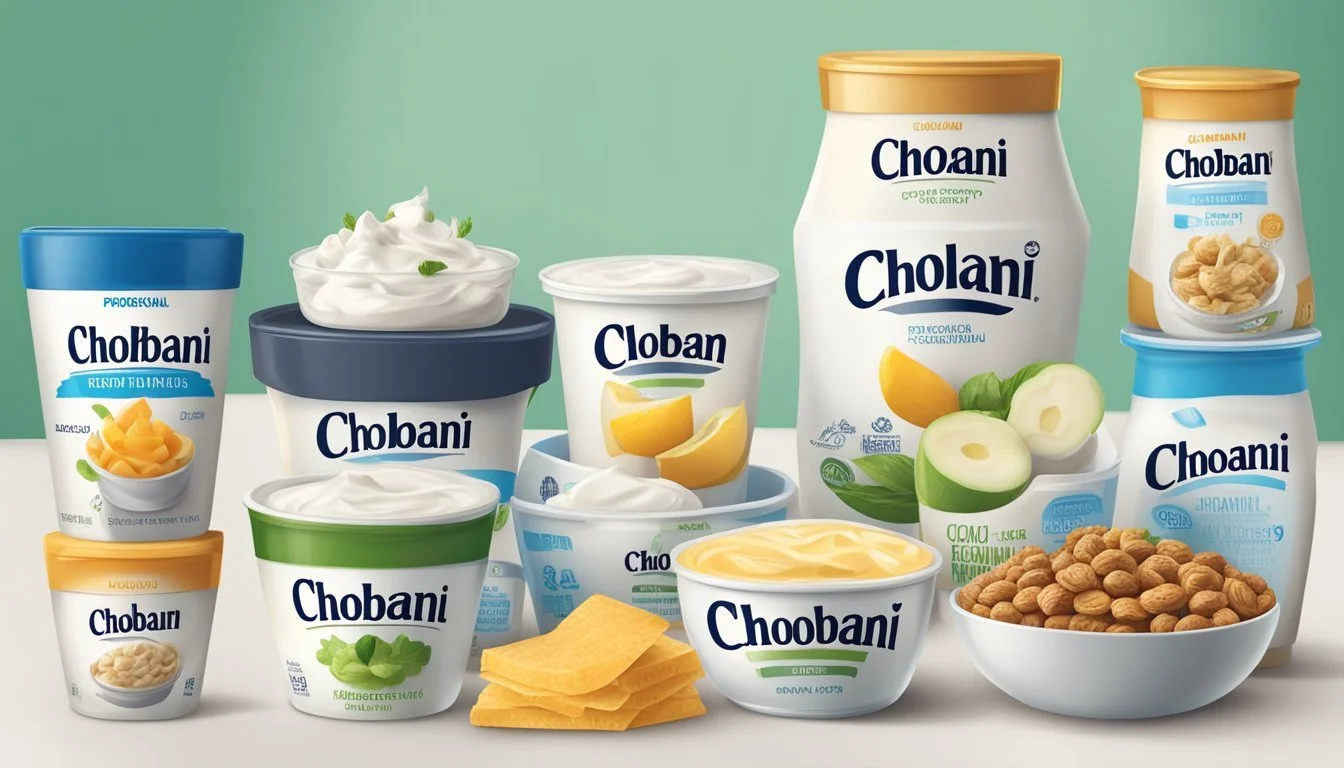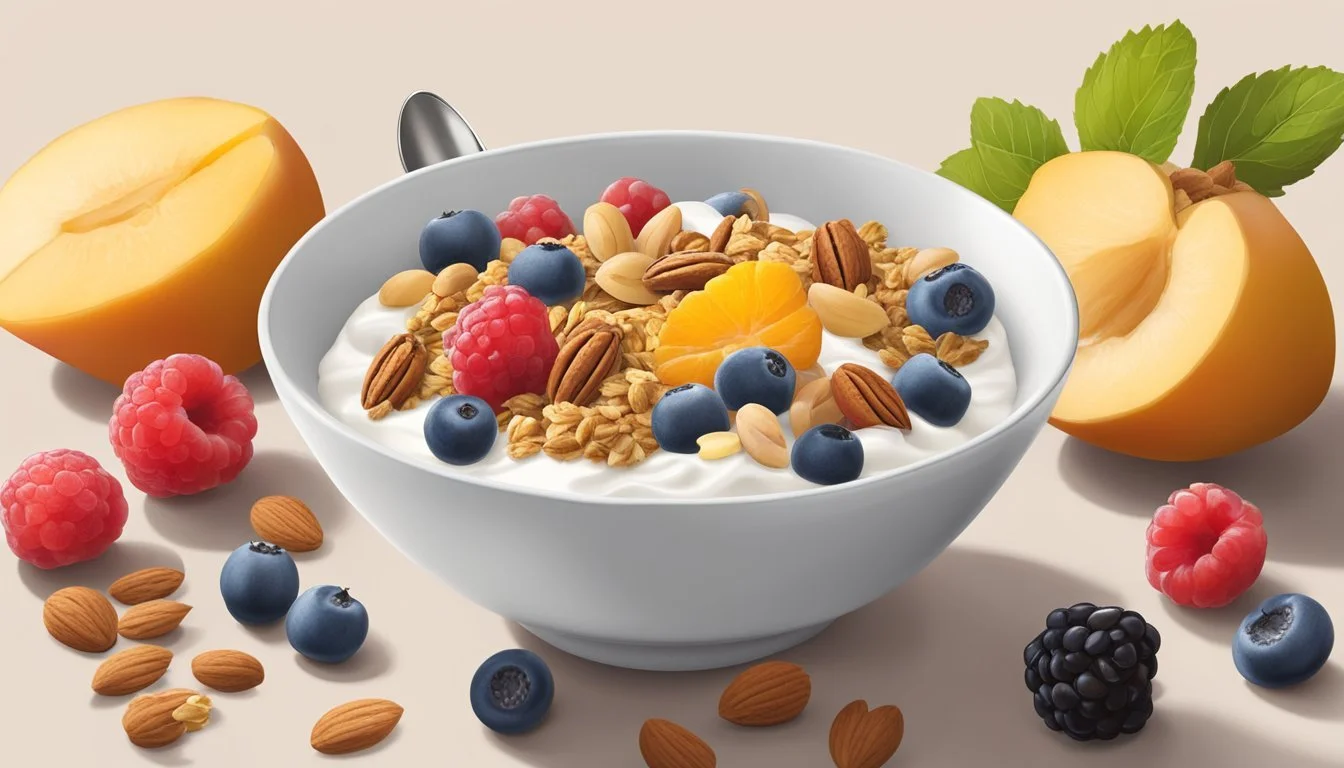How Many Servings of Chobani Greek Yogurt Per Day
Understanding Limits and Health Benefits
When it comes to eating Chobani Greek yogurt, moderation is key, although it's often touted for its health benefits such as being rich in protein and probiotics. The recommended serving size is typically one container, which is about 5.3 ounces or 150 grams. This amount can fit well into a balanced diet, providing essential nutrients without excessive calories or added sugars.
However, the specific number of servings that would be considered too much can vary based on individual dietary needs, health goals, and nutritional intake from other sources. Generally, consuming more than three servings of Greek yogurt a day may start to displace other important foods and nutrients needed for a well-rounded diet. It is also important to consider the sugar content in flavored yogurts and opt for plain varieties to keep sugar intake in check.
Individuals should be attentive to their overall dairy intake, as consuming high amounts can contribute to excessive calorie, sugar, and saturated fat intake, which may have implications for long-term health. Consulting with a healthcare provider or a registered dietitian can provide personalized recommendations based on one's health status and dietary preferences.
Understanding Greek Yogurt
Greek yogurt stands out from other yogurts due to its unique straining process that results in a thicker consistency with a higher protein content. This section will explore the characteristics of Greek yogurt, its nutritional profile, and the differences between plain and flavored varieties.
What Is Greek Yogurt?
Greek yogurt is a type of yogurt that has been strained more extensively than regular yogurt to remove most of the whey, resulting in a thicker, creamier texture. The straining process concentrates the proteins and reduces the lactose content. Greek yogurt can be made from all types of milk, including whole milk for full-fat varieties or skim milk for low-fat options. The fermentation process involves live bacteria which convert the lactose in milk into lactic acid, giving Greek yogurt its characteristic tangy flavor.
Nutritional Profile
Typically, Greek yogurt has a higher protein content compared to regular yogurt. On average, a 5.3-ounce serving contains approximately:
Nutrient Greek Yogurt Regular Yogurt Protein (grams) 12 6 Sugar (grams) 9 18
These values can vary by brand and specific variety. Greek yogurt is also known for containing probiotics, which are beneficial live active cultures that support gut health.
Plain vs. Flavored Varieties
Greek yogurt comes in both plain and flavored varieties. Plain Greek yogurt is without added flavors or sweeteners, offering a tangy taste suitable for both savory and sweet dishes, and can be a healthier option for those monitoring their sugar intake. In contrast, flavored varieties often contain added sugars and fruit preparations. Brands like Chobani offer a plethora of flavors catering to different palates, though it is important to read labels to be aware of the sugar content.
In summary, Greek yogurt is a nutrient-dense food that, due to the straining process, offers a rich source of protein and probiotics. Whether consuming plain or flavored Greek yogurt, one should take into account the variations in sugar content and choose according to their dietary preferences and health goals.
Health Benefits and Nutrients
Chobani Greek yogurt is nutrient-dense and provides several health benefits due to its high content of protein, probiotics, and essential minerals and vitamins.
Probiotic Benefits
Greek yogurt is a rich source of probiotics, beneficial bacteria that support gut health. These live and active cultures help maintain the balance of good bacteria in the gut, which can aid in digestion and bolster the immune system.
Bone Health and Calcium
Calcium is critical for bone health, and Chobani Greek yogurt is an excellent source of this mineral. One serving contains about 111 milligrams of calcium, which contributes to the maintenance of strong bones and teeth.
Macronutrients and Vitamins
Chobani Greek yogurt is not only lower in calories but is also packed with essential macronutrients and vitamins.
Protein: It averages around 12 grams of protein per 5.3oz serving, which is crucial for muscle repair and growth.
Fat: The fat content may vary depending on whether you choose non-fat, low-fat, or full-fat options.
Vitamins: Particularly rich in vitamin B12, Greek yogurt aids in preventing anemia and maintaining healthy blood cells and nerves.
Minerals: It supplies the body with minerals such as magnesium, phosphorus, and potassium, supporting functions like energy production, bone health, and regulation of blood pressure.
Daily Recommendations and Servings
When considering the consumption of Chobani Greek yogurt, it's important to adhere to recommended serving sizes and dietary guidelines to maintain a balanced diet and support weight management.
Understanding Serving Sizes
Chobani Greek Yogurt typically contains around 12 grams of protein per 5.3oz serving. To understand how much Chobani Greek yogurt one can eat daily, one must consider both the nutritional content of the yogurt and the individual's dietary needs.
For Adults: A standard serving size is one 5.3oz container.
Protein: Each serving contains approximately 12g of protein, which is roughly 24% of the recommended daily allowance (RDA) for women and 20% for men, based on a 50g RDA.
Sugar content: Chobani Less Sugar variety contains approximately 9g of sugar per 5.3 oz serving, which is beneficial for those monitoring their sugar intake.
Dietary Guidelines
The dietary guidelines suggest that adults include 2-3 servings of dairy in their diet each day. This can include Greek yogurt, which is a source of protein and calcium, both essential for maintaining good health.
For Weight Management: Including Greek yogurt as one of the dairy servings can contribute to a feeling of fullness and may help with weight management efforts due to its high protein content.
Calcium Intake: An individual should not exceed 1000-1300mg of calcium daily, depending on their age and gender, and one serving of Chobani Greek yogurt contributes to this intake.
It is important to balance yogurt consumption with other sources of protein and calcium to ensure one's diet is varied and covers all nutritional bases without exceeding the RDA of key nutrients.
Potential Risks of Overconsumption
While Chobani Greek yogurt can be a nutritious part of one's diet, consuming it in excessive amounts may lead to potential health risks. It's important for individuals to be aware of the ramifications that overconsumption can have on cholesterol and heart health, sugar content and its relation to diabetes, and the implications of excessive calorie intake leading to weight gain.
Cholesterol and Heart Health
Excessive intake of Chobani Greek yogurt, particularly full-fat versions, could contribute to higher cholesterol levels. High dietary cholesterol can be a concern for those predisposed to heart disease. Greek yogurt contains saturated fats which, when consumed in large quantities, may affect heart health by increasing LDL ("bad") cholesterol levels.
Sugar Content and Diabetes
Chobani Greek yogurt varieties, especially those that are flavored or contain added fruits, can be high in sugar. Consuming these types loaded with added sugars may increase the risk of developing type 2 diabetes. For diabetics or those at risk, it is crucial to monitor the sugar content:
Plain Greek yogurt: typically lower in sugar
Flavored/Fruit yogurt: can contain significant amounts of added sugars
Weight Gain and Calories
Greek yogurt is calorie-dense, and overconsumption can lead to calorie surplus and potential weight gain. This is of particular concern in the context of obesity. It is essential for individuals to consider the calorie content of Chobani Greek yogurt within the framework of their total daily caloric intake to prevent unintentional weight gain.
Digestive Considerations
In assessing the consumption of Chobani Greek yogurt, one must consider both its lactose content, which may affect those with intolerances, and its probiotic profile, which can influence digestive health.
Lactose Content and Intolerance
Chobani Greek yogurt contains less lactose than traditional yogurt due to the straining process that removes some of the whey, which is where much of the lactose is found. A 5.3oz serving of Chobani Greek yogurt typically contains less than 5% lactose, making it a more suitable option for people with lactose intolerance. However, individual tolerance levels vary, and some may still experience symptoms such as bloating, gas, or diarrhea if their lactose threshold is exceeded. Monitoring one's own response to lactose is critical in determining an appropriate serving size.
Digestive Health and Probiotics
Probiotics are live microorganisms that, when administered in adequate amounts, confer a health benefit on the host—mainly by maintaining or restoring gut flora. Chobani Greek yogurt is enriched with probiotics, which can support digestive health and may alleviate the symptoms of irritable bowel syndrome (IBS). Regular consumption of probiotic-rich foods like Chobani yogurt can support a balanced digestive system, but the exact number of servings that can be consumed without negative effects varies per individual. It's essential to adjust intake based on personal health, nutritional needs, and specific digestive conditions.
Customizing Greek Yogurt Consumption
When tailoring the consumption of Greek yogurt to individual dietary needs, it's important for consumers to consider both the toppings they add and whether to use homemade or store-bought varieties.
Add-ins and Toppings
Greek yogurt serves as a versatile base for numerous healthy add-ins that cater to both taste and nutritional content. Plain yogurt is often recommended as it does not contain the added sugars found in many flavored yogurts. Consumers can enhance the nutritional value of their yogurt by including fibrous ingredients like fresh fruit or nuts. Additionally, a drizzle of honey offers natural sweetness without the need for artificial additives.
Suggested Toppings:
Fiber: Oats, bran, chia seeds
Sweetness: Honey, maple syrup, stevia
Texture: Nuts, granola, coconut flakes
Freshness: Sliced banana, berries, diced apple
Toppings not only provide a flavor boost but can also increase the health benefits of Greek yogurt. One must remember to moderate toppings to keep the calories in check, ensuring that the benefits of probiotic-rich Greek yogurt are not overshadowed by excessive calorie intake.
Homemade vs. Store-Bought
Consumers looking to avoid additives or hormones that can be present in commercial yogurts might choose to make their yogurt at home. Homemade Greek yogurt gives them control over the ingredients, ensuring that their yogurt contains the live and active cultures that make probiotic yogurt beneficial. However, it requires time and effort to prepare.
Comparison:
Aspect Homemade Greek Yogurt Store-Bought Greek Yogurt Probiotic Content Controlled by maker Labeled on packaging Additives No unnecessary additives Varies by brand Sweeteners Added to taste Often pre-sweetened Time Commitment High Low Cost Varies Typically higher
Store-bought Greek yogurt in individual cups provides convenience and portion control but can also contain sweeteners and other additives. It's recommended that consumers read labels carefully to choose yogurts with live cultures and without significant levels of added hormones or sugars.
Incorporating Greek Yogurt into a Balanced Diet
Greek yogurt is a versatile ingredient that fits well in a balanced diet, often praised for its high protein content and essential vitamins. It can be enjoyed in various meal settings due to its creamy texture and can serve as a substitute for higher-saturated fat dairy items.
Meal Planning and Recipes
When planning meals, Greek yogurt is an excellent addition to breakfast options. One can mix it with fruits, like almonds or berries, to create a nutritious morning meal or smoothie. Here's an example for a breakfast bowl:
1 cup of low-fat or nonfat Greek yogurt
1/2 cup of mixed berries
A handful of almond slices
A drizzle of honey (optional)
Lunch and dinner recipes might also include Greek yogurt as a healthy substitute for sour cream or mayonnaise, adding it into dips or dressings. This not only helps reduce the intake of saturated fats but also enhances the dish with a tangy flavor.
Substitutes and Alternatives
In situations where dairy products are not suitable—whether due to dietary restrictions or personal preference—alternatives like almond, soy, and coconut yogurts can be used. These options tend to be lower in protein compared to Greek yogurt, so one may need to supplement their protein intake elsewhere in their diet. It's also key to check for added sugars to maintain a healthy diet.
Individuals seeking to limit their fat intake can opt for low-fat or nonfat versions of Greek yogurt, which retain most of the beneficial nutrients without the extra fats. However, moderation is crucial; incorporating these alternatives should align with overall dietary goals and nutritional needs.
Brand-Specific Considerations
When determining the optimal consumption of Chobani Greek yogurt, one must consider its nutritional profile relative to the daily dietary needs. Chobani prides itself on using natural ingredients and is known for a high protein content and a variety of flavors.
Protein Intake:
A standard 5.3oz serving of Chobani Greek yogurt contains an average of 12 grams of protein.
Recommended dietary allowances suggest that an average adult needs 0.8 grams of protein per kilogram of body weight.
Sugar Content:
Chobani offers a 'Less Sugar' line with 9 grams per 5.3 oz serving, while traditional versions average about 18 grams.
Continuous monitoring of total daily sugar intake is crucial, as the American Heart Association recommends no more than 25g (women) to 36g (men) of added sugars per day.
Natural Sweeteners:
Chobani utilizes natural sweeteners as opposed to artificial ones, catering to health-conscious consumers.
Awareness of the type of sweeteners and their effects on the body can help consumers make informed decisions.
In addition to protein and sugar, individuals should be aware of caloric intake and dietary restrictions. Chobani Greek Yogurt ranges from 100 to 150 calories per serving, making portion control easier for those who are calorie-conscious. It is essential for consumers to align their yogurt intake with their overall nutritional goals, keeping in mind that while Chobani’s offerings are free of artificial sweeteners, they do contain dairy and may not be suitable for all dietary needs.
Lactose Considerations:
They should check the labeling for live and active cultures, which can aid in digestion for those with minor lactose sensitivities.
By considering these factors, one can integrate Chobani Greek yogurt into their diet without exceeding their nutritional requirements.








